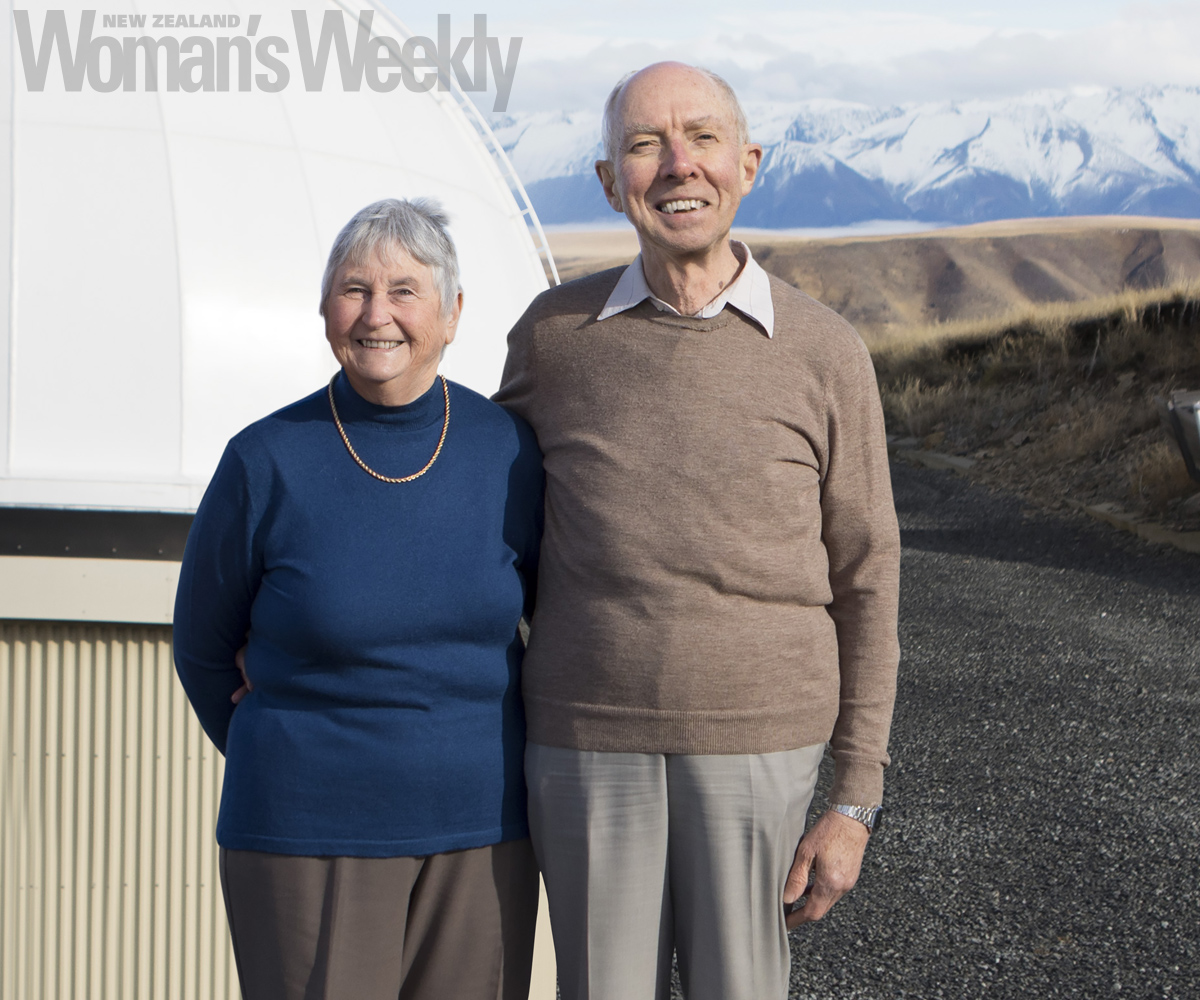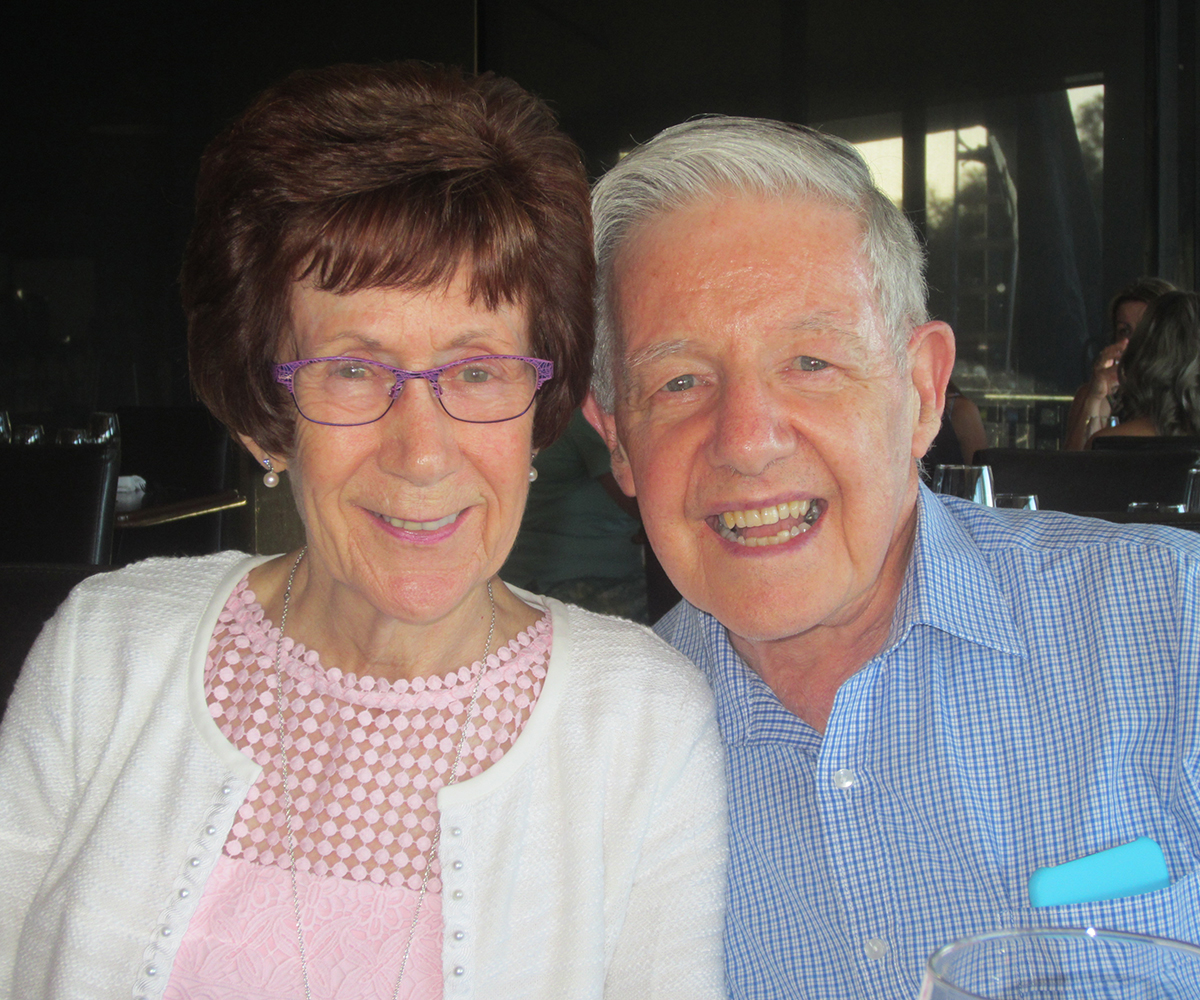Pamela Kilmartin remembers looking up at the stars as a child and pondering life, the universe and everything.
A Time Life book on astronomy – a gift from her parents – was an added bonus for a little girl fascinated by the night sky, who would go on to become one of New Zealand’s foremost space pioneers.
Pam and her husband Alan Gilmore have spent a lifetime observing and tracking near-Earth objects (NEOs) – comets and asteroids that could pose a collision danger.
Fittingly, the couple met at a Royal Astronomical Society of New Zealand conference in 1971. Pam, a librarian, had started a career in astronomy in Auckland, and Alan was a Victoria University physics graduate. Two years later, they began working together at Wellington’s Carter Observatory.
“We got along famously,” Alan says. “The board knew we were an item, but they took the risk of appointing Pam as she had the background for the job. From my viewpoint, I had found my soulmate.”

With Ned, the older of their two children, and their telescope in Wellington, 1989.
The stargazing pair married the following year and, in 1980, moved to Lake Tekapo, taking up roles with the University of Canterbury at the Mount John Observatory.
They have since discovered 41 asteroids, a comet and a nova, and their work in the area has seen them recognised in the best possible way – having space objects named after them.
The minor planet 3907 Kilmartin, discovered in 1904 by Max Wolf, a German pioneer in the field of astrophotography, was named in Pam’s honour, while the Eunomia asteroid 2537 is known as the ‘Gilmore’.
More recently, the pair’s long contribution to all things cosmic has been honoured on a set of postage stamps – they’re the only living individuals alongside Kiwi space legends Beatrice Tinsley, William Pickering, Charles Gifford and Albert Jones, one of Alan’s mentors.
The asteroid-hunting couple’s curiosity for the night sky began early. Pam had her book, but it was a visit to Auckland Observatory with her father – when she saw her first telescopic view of Saturn – that really piqued her interest.
She joined the Auckland Astronomical Society and learned to observe variable stars with a photoelectric photometer, with the guidance of other members.
“I’m an amateur astronomer who learned from some very professional amateurs,” the humble 69-year-old says.
Alan (74) caught the astronomy bug after seeing a falling star on a walk with his dad when he was six.
A visit to Carter Observatory to view the moon and Venus followed. But, like Pam, it was a book that really set him on his career trajectory.
“The Hutt Intermediate School library had a book that had a star atlas in it. It also gave you an idea of how to build your own telescope. I was hooked! I got a job at a pharmacy, delivering prescriptions by bicycle after school, and saved up to buy the bits I needed to build my own telescope.”

Pamela and Alan inside the Mt John Observatory.
Recalling their days at Carter, they talk of weeks spent writing up tables of moon sets and rises for the New Zealand Nautical Almanac, and of the excitement – and subsequent disappointment – when they started discovering “new” objects.
“All turned out to have been seen earlier by other observers,” Alan explains. “It was at Mt John that we found all our credited discoveries.”
Those include the first asteroid they discovered, which they named Aotearoa; the asteroid Gifford, named for Charles Gifford who established an observatory at Wellington College and whose newspaper articles were a source of wonder for a young Alan; and Canterbury, a dark Dorian asteroid discovered in 1985.
It was also at Mt John that the pair watched Halley’s Comet pass over New Zealand in 1986 and saw their most spectacular auroras, including 2001’s “coronal mass ejection”, which lit up the entire sky.

Pam and Alan have been immortalised in a set of postage stamps featuring Kiwi space pioneers
Now that all the bigger “main belt” asteroids (those that orbit between Mars and Jupiter) have been found, they say sighting something undiscovered is close to impossible these days. And technological advances have been both a blessing and a curse.
“Before digital cameras, photographs would have to be printed in dark rooms and measurements done by hand,” says Pam.
“Nowadays, there’s digital images and computer programmes. It’s certainly much more exciting to have images on a screen almost instantaneously – you can watch an asteroid passing through a group of stars in just a few minutes.”
On the other hand, the plethora of man-made objects, such as satellites being blasted into space, is worrying. Alan is particularly concerned about entrepreneur Elon Musk’s intention to pepper the skies with internet communications satellites.
“Astronomers hate them because they ruin scientific pictures. Radio astronomers have a particular concern, as ‘radio quiet’ regions will disappear.”
Though retired, the couple still spend time at Mt John, observing, and inspiring a new generation of visiting children.
“Some of the kids know more about a particular subject than we do, quite honestly!” says Alan. “But they are challenging and fun. We enjoy it immensely.”




